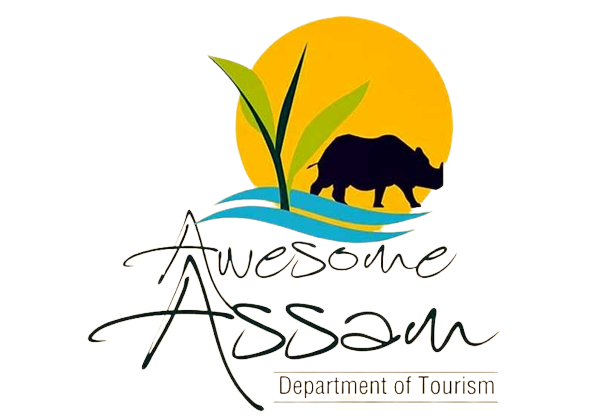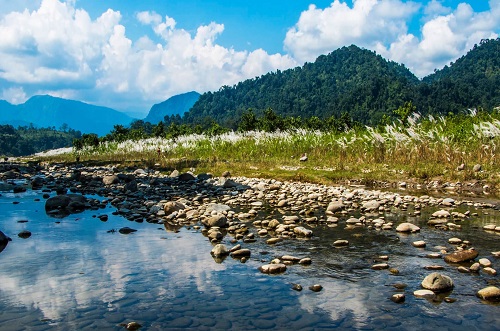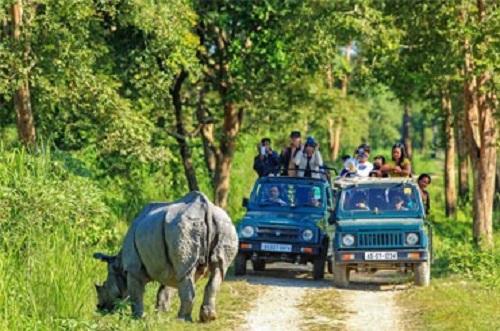
Assam Tour
There are 5 National Parks, 17 Wildlife Sanctuaries and 3 Bird Sanctuaries in the state | Assam Tourism
Kaziranga : The park, which hosts two-thirds of the world’s Indian rhinoceroses, is a UNESCO World Heritage Site. Rhino numbers is 2,613 according to last census.
Manas : Manas National Park is also known as Manas Wildlife Sanctuary. This National park is a UNESCO Natural World Heritage site, a Project Tiger reserve, an elephant reserve, and a biosphere reserve in Assam. It is famous for Tigers and Tiger conservation. Manas is also famous for its population of the Wild water buffalo.
Dibru-Saikhowa: The forest type of Dibru-Saikhowa comprises of semi-evergreen forests, deciduous forests, littoral and swamp forests and patches of wet evergreen forests. Famed for Ferral horses, a total 36 species of mammals and above 400 species of birds have so far been recorded from the Dibru-Saikhowa National Park.
Nameri: Nameri is home to some of the endangered species like white winged wood duck, Sloth Bear, Tiger Leopard, Clouded Leopard, Sambar, Gaur, Indian Wild Dog, four varieties of Hornbill and many other winged species.
Pobitora: Pobitora Wildlife Sanctuary hold the distinction of having the highest population density of Indian One Horned Rhinoceros anywhere in the World – a record 102 numbers in just a core area of 16 sq. km. which is very close to Guwahati.
Popular Tours | Assam Tourism
Religious Destinations
Kamakhya Temple: The Kamakhya Temple at Nilachal hills in Guwahati, Assam is one of the oldest and most revered centers of Tantric practices,[3] dedicated to the goddess Kamakhya. The temple is the center of the Kulachara Tantra Marga and the site of the Ambubachi Mela, an annual festival that celebrates the menstruation of the goddess.
Gurdwara Sri Guru Tegh Bahadur Sahib: This is the Gurdwara of Sikhs in Dhuburi town on the bank of the Brahmaputra River in Assam, India. The first Sikh guru, Guru Nanak Dev, visited this place in 1505 AD and the 9th Guru Teg Bahadur came to this place and established this Gurdwara during the 17th century.
Hajo: Situated on the banks of the mighty Brahmaputra River, Hajo is an ancient pilgrimage devoted to Hindus, Muslims as well as Buddhists. The most famous attractions here include Hayagriva Madhava Temple and Powa Mecca mosque.
History and Culture
Sibsagar: Sivasagar, formerly known as Rangpur, was the capital of the Ahom Kingdom from 1699 to 1788. The Ahoms ruled Assam for six centuries, until their kingdom fell to the Burmese in 1819 and their ruling class was all but wiped out. The top sightseeing places in Sibsagar are Talatal Ghar, Rang Ghar, Tai Museum, Charaideo, Joysagar Tank and Temples, Shivadol
Sualkuchi: Is the center of Assamese Silk industry. Assam’s Muga silk is the product of the silkworm Antheraea assamensis endemic to Assam. The larvae of these moths feed on som (Machilus bombycina) and sualu (Litsaea polyantha) leaves. The silk produced is known for its glossy, fine texture and durability.
Jorhat : Jorhat is the epicenter of Tea garden and industry of Assam. A stay in the tea garden bungalow can be arranged to experience this unique beauty.
Majuli : With a total area of 352 square kilometres (136 square miles), “Majuli” is the world’s largest river island and is definitely one of the most pristine places with its laid back rural life.
Achievements and Recognitions




Address List
- Sixmile, Panjabari, Guwahati
- +91 94355 15011
- +91 86386 04075
- query.naturehunt@gmail.com

Happiness is traveling



